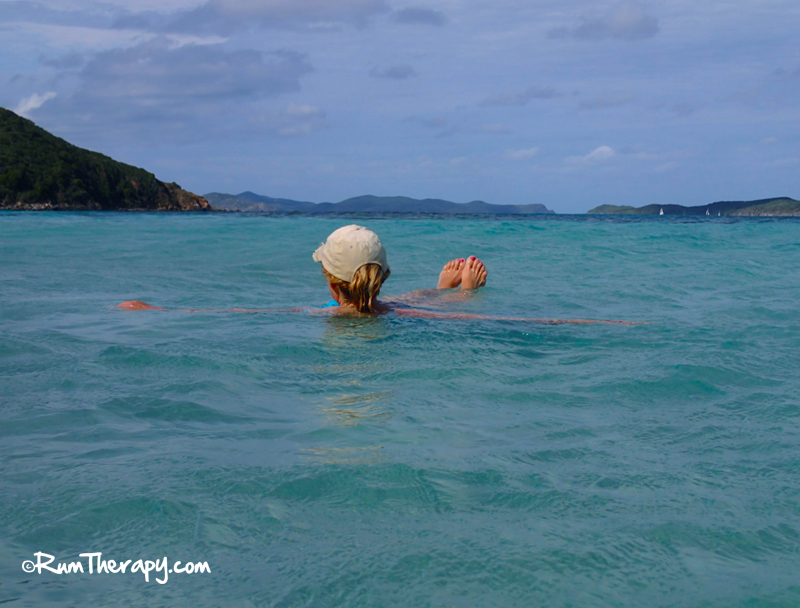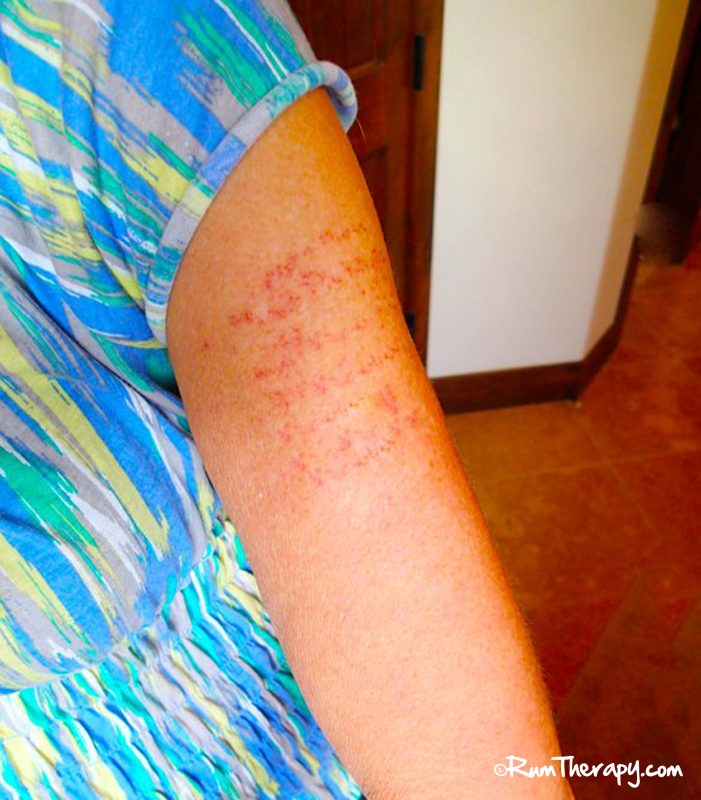Do you love spending time in the ocean, swimming, floating, wading, surfing, etc? Well, we certainly do, but sometimes we’re reminded that we are guests in that vast blue expanse and need to respect – and be careful of some of the native ocean inhabitants.
 While floating in a particularly beautiful area in the Caribbean recently, I suddenly felt a piercing sting on my upper left arm. I immediately stood up and moved – happy that I was in a shallow enough area to do so, and saw a jellyfish floating in the water next to me. I immediately exited the water and sat down on the beach to survey the damage. The stinging was intense and not having experienced this phenomena before, I was uncertain of what to do. After asking some locals for advise, I was able to relieve the pain and aside from a week or so of red welts on my arm, came out of it absolutely fine.
While floating in a particularly beautiful area in the Caribbean recently, I suddenly felt a piercing sting on my upper left arm. I immediately stood up and moved – happy that I was in a shallow enough area to do so, and saw a jellyfish floating in the water next to me. I immediately exited the water and sat down on the beach to survey the damage. The stinging was intense and not having experienced this phenomena before, I was uncertain of what to do. After asking some locals for advise, I was able to relieve the pain and aside from a week or so of red welts on my arm, came out of it absolutely fine.
 Will this occurrence prevent me from floating in the ocean ever again? Heck no! I will, however, know how to treat a sting in the unlikely event that I, or one of my travel mates ever experience it again.
Will this occurrence prevent me from floating in the ocean ever again? Heck no! I will, however, know how to treat a sting in the unlikely event that I, or one of my travel mates ever experience it again.
So what is the best way to treat a jellyfish sting? I’m sure we’ve all heard our share of suggestions for treating a sting. First of all, realize that most jellyfish stings are not dangerous, but some do cause intense pain. If, however,the person stung begins to experience any symptoms of a severe allergic reaction such as difficulty breathing, dizziness, hives, chest tightness or a change in level of consciousness, promptly seek emergency attention. You should also seek immediate medical attention if you know the sting was from a Portuguese Man O’ War or a Box Jellyfish (Sea Wasp) as these stings are extremely dangerous and may require anti-venom.
The current recommendations for treatment of a sting (other than a Box Jellyfish, Sea Wasp or Potuguese Man O’ War) appear to be the following:
If you, or someone you know are stung,
1. Get out of the water immediately.
2. Stop the stinging:
a. Rinse the sting area with hot water or saltwater to remove the tentacles. Don’t use freshwater as it can cause the stinging cells (nematocysts) that haven’t fired yet to release their venom.
b. Inactivate the toxin by flooding the area with vinegar or using a baking soda paste. If vinegar or baking soda paste are not available, you might try diluted ammonia, unseasoned meat tenderizer or papaya, although there are some that say these substances don’t do much at all to neutralize the toxins. Urine is no longer recommended due to the possibility of causing a bacterial infection.
c. Remove any remaining tentacles by applying shaving cream or a paste of mud, sand and seawater and scrape area with a razor or credit card, or pull them off with tweezers. Do not attempt to remove the tentacles with your fingers as they can continue to release venom.
d. Apply more hot water or vinegar.
3. Treat the swelling and pain.
An oral antihistamine or a cream with lidocaine may help with the itching and swelling.
Be sure to seek medical attention if the symptoms persist or the individual displays any signs of an anaphylactic or allergic reaction.
Are there any ways to prevent getting stung by a jellyfish?
1. Pay attention to any warnings of jellyfish in the area and do a little research on times of the year when more jellyfish may be present in the area you are going to visit.
2. Cover up while swimming or snorkeling with a wet suit or long sleeved Lycra swim shirt. Clothing may not totally protect you from getting stung, but should protect a larger area of skin.
3. Try a product called Safe Sea Lotion which purports to protect the skin from jellyfish stings as well as sea lice and even fire coral.
The likelihood of experiencing a problem with a jellyfish while enjoying the waters of the Caribbean is quite low. You are much more likely to experience the sting of a bad sunburn – so don’t let the fear of the jelly prevent you from getting your toes in the water!
copyright©Rum Therapy Beaches, Bars & More, Tropical Travel Guide, 2013
Pictures and other content may not be re-used without written consent from Rum Therapy, LLC

While a good draw down on a bottle of spiced rum seems always appropriate on the beach or at sea, our company, Ocean Care Solutions, Inc., mfg a very effective and proven jellyfish sting relief spray..made with 5% acetic acid..spray it on..scrape it off..done!…We also mfg a Lionfish, Portuguese Man o War, Fire Coral, Stingray and Sea Urchin sting 1st aid kits….check us out at http://www.oceancaresolutions.com … Cheers !! Ron
Thanks for the info Ron!